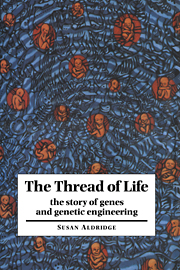9 - The wide world of biotechnology
from PART III - Biotechnology
Published online by Cambridge University Press: 16 March 2010
Summary
Biotechnology, the exploitation of biological materials and processes for human needs, has a long history. The ancient Egyptians applied mouldy bread to infected wounds for its antibiotic effect – today we turn that mould into penicillin. Also, the fermentation of fruits and grains to make wine, beer and spirits has been going on all over the world for thousands of years.
In biotechnology, we use microbes and cells as factories, and enzymes as the workers. Between them they turn out food, fuel, medicine and a wide range of other products in everyday use, with a market value of billions of dollars. Now genetic engineering and other techniques from molecular biology have given biotechnology a huge boost.
Enzymes are the master molecules of biotechnology
Much of biotechnology relies on the transforming power of enzymes. As we saw in Chapter 1, enzymes are proteins originating in cells, and each is usually specific for a particular biochemical process. Some enzymes are involved in basic cellular functions, such as extracting energy from food and making DNA. Others carry out more specialist tasks, manufacturing molecules that do not appear to be essential to the organism's survival. Instead they are used in ‘chemical warfare’, either to prevent competition or avoid predation. This is where antibiotics come from. We can imagine how, in ancient soils, competing communities would fight for their territory by using their own individual antibiotic molecules to try to wipe each other out. These products – known as secondary metabolites (metabolism is the term given to the enzyme-controlled chemical activity of the cell) – appear to be exclusive to the cells of microbes, simple marine organisms and plants.
- Type
- Chapter
- Information
- The Thread of LifeThe Story of Genes and Genetic Engineering, pp. 183 - 196Publisher: Cambridge University PressPrint publication year: 1996



